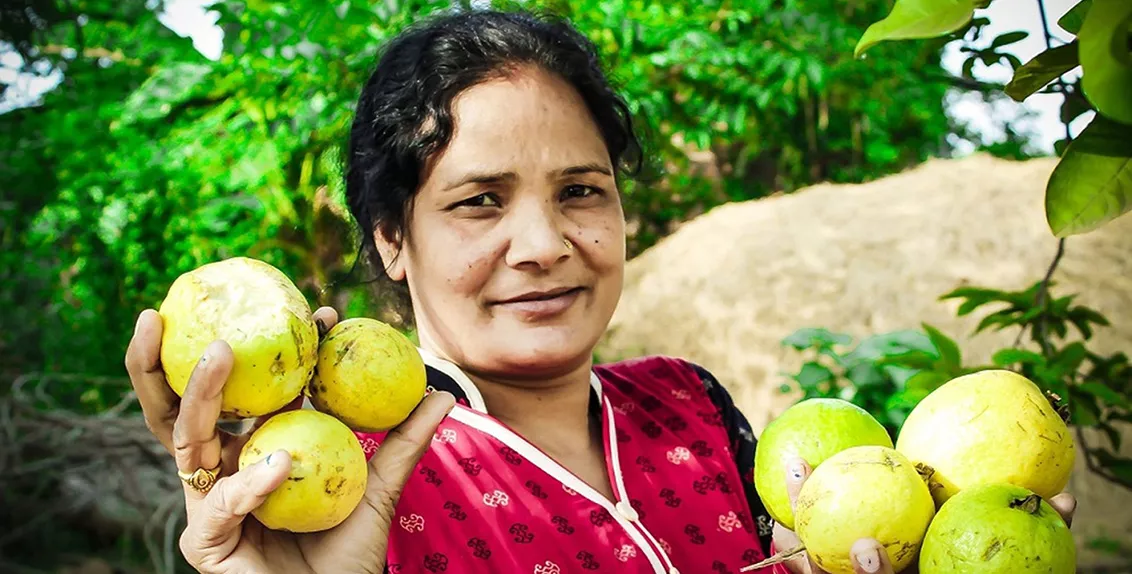UN Food Systems Summit brief calls for global increase in consumption of fruits and vegetables
10 May 2021
The need to increase the global consumption of fruits and vegetables for healthier diets has been highlighted in a United Nations Food Systems Summit (UNFSS) 2021 brief prepared by scientists working for member organisations of AIRCA.
The brief, entitled ‘Fruits and Vegetables for Healthy Diets: Priorities for Food System Research and Action’, states that fruits and vegetables are unaffordable for many, with 3 billion people around the world unable to afford diverse healthy diets.
Authors Dr Jody Harris of the World Vegetable Centre, Dr Stepha McMullin from World Agroforestry, Dr Babar Bajwa of CABI, Dr Bart de Steenhuijsen Piters, Dr Ilse de Jager and Dr Inge D. Brouwer – all of Wageningen University and Research, argue that it is necessary to address the issue of low fruit and vegetable consumption through a set of ‘push’, ‘pull’ and ‘policy’ actions.
The scientists, writing as Research Partners of the Scientific Group for the Food Systems Summit 2021, suggest that there is ‘still a need to better understand the different ways that food systems can make fruits and vegetables available, accessible, affordable and desirable for all people, across places and over time.’
However, they also stress that we already know enough to accelerate action in support of healthy diets to meet the World Health Organization (WHO) dietary recommendations and, specifically, the UN Sustainable Development Goal (SDG) 2: ‘Zero Hunger’ which highlights the importance of improved nutrition.
In the brief, the scientists note low desirability of fruits and vegetables is particularly a problem among children and adolescents, with data across 73 countries showing that between 10-30% of students do not eat any vegetables at all in a quarter of these countries. In 52 countries, 82% of the poorest quintile and 73% of the wealthiest quintile consume too few fruits and vegetables.
Even if vegetables are available, accessible, and affordable, most people still do not consume sufficient quantities for proper nourishment. Food safety or contamination concerns, taste preferences, or cultural appropriateness prevent many from increasing the amount of fruit and vegetables they consume.
The need to ‘push’
‘Push’ factors (production and supply) demand particular attention in Africa, where only 13% of countries have an adequate aggregate vegetable supply; in Asia, 61% do. While most fruits and vegetables (about 92%) are not internationally traded, global activity in the fruit and vegetable sector was valued at US$ 138 billion in 2018.
The authors suggest that fruit and vegetable production needs to increase, particularly in regions with low consumption, together with accompanying measures to prevent losses to provide enough for healthy diets.
Push actions include strengthening farmer extension and documenting how informal sectors and formal small- and medium-sized enterprises involved in fruit and vegetable processing, distribution, and retail can deliver on desired food system outcomes.
The need to ‘pull’
‘Pull’ factors (demand and activism) aim to enhance consumer choice of and preference for fruit and vegetables.
Focusing on education at all levels is a key component for behaviour change. Nutrition literacy, social norms for healthy eating, and self-efficacy are essential for people to take charge of their diets and health.
The scientists observe that ‘beyond appeals to public health, better understanding is required of consumers’ preferences and behaviours with respect to these foods and what kinds of incentives might promote more consumption in different contexts.’
The need for ‘policy’
‘Policy’ (legislation and governance) is the third lever to shift food systems away from calories and toward diet quality.
The Green Revolution in the latter part of the 20th century transformed agriculture’s ability to produce sufficient calories to feed the world. But the focus on grain crops through funding, research, extension and technology development limited supply of nutrient-dense fruits and vegetables both through losses of wild sources with the promotion of monocultures, and through policy and structural impediments that crowded out non-staple crops.
The combined international public research budget for maize, wheat, rice, and starchy tubers is 30 times higher than for vegetables, for instance. This has influenced national food policies, which tend to emphasize staple crops as a source of cheap calories rather than a diverse diet with fresh foods as a source of essential nutrients.
‘Reverse thinking’ is suggested to address the current situation: Put the dietary outcomes we want from food systems up-front in responsive food policy-making and legislation. To reorient and incentivise systems, a better understanding of how public and private decision-makers make food system choices and the influence other food system actors have on these decisions is needed.
Next steps
Acknowledging that ‘power shapes food systems’ – from the ‘concentration economic and political power in a few global agri-food businesses, through to marginalisation of certain groups in societies’ – is an important step in shaping effective, equitable food policy.
There will be trade-offs among food system outcomes, the researchers say. Starting with a focus on healthy diets is important, but understanding how food system decisions impact fair livelihoods and sustainable environments is key.
Providing sufficient fruit and vegetables for healthy diets is not only a technical challenge. It also raises political, social and ethical questions societies will have to address, relying on evidence.
The authors conclude: ‘Having these conversations though the lens of equity, to address the needs of both winners and losers of food systems change, will be a vital part of the UNFSS process towards enabling fruit and vegetable-rich food systems for healthy diets for all.’












